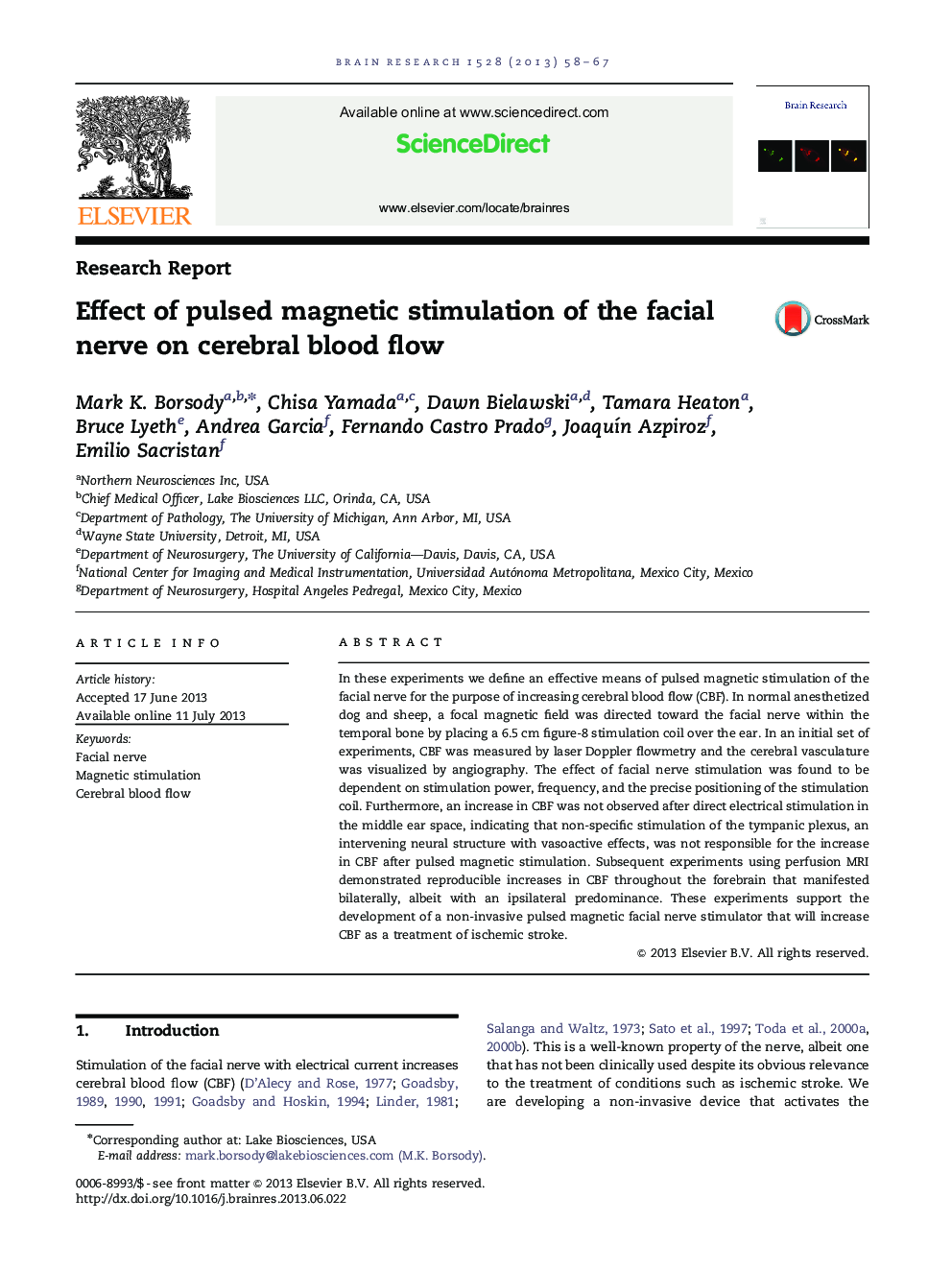| Article ID | Journal | Published Year | Pages | File Type |
|---|---|---|---|---|
| 6263731 | Brain Research | 2013 | 10 Pages |
â¢Magnetic stimulation non-invasively activated vasoregulatory components of the facial nerve.â¢Increased cerebral blood flow was dependent upon stimulation power and frequency.â¢Increased cerebral blood flow was dependent upon the precise positioning of the stimulation coils.â¢Pulsed magnetic stimulation increased cerebral blood flow bilaterally in the forebrain.
In these experiments we define an effective means of pulsed magnetic stimulation of the facial nerve for the purpose of increasing cerebral blood flow (CBF). In normal anesthetized dog and sheep, a focal magnetic field was directed toward the facial nerve within the temporal bone by placing a 6.5Â cm figure-8 stimulation coil over the ear. In an initial set of experiments, CBF was measured by laser Doppler flowmetry and the cerebral vasculature was visualized by angiography. The effect of facial nerve stimulation was found to be dependent on stimulation power, frequency, and the precise positioning of the stimulation coil. Furthermore, an increase in CBF was not observed after direct electrical stimulation in the middle ear space, indicating that non-specific stimulation of the tympanic plexus, an intervening neural structure with vasoactive effects, was not responsible for the increase in CBF after pulsed magnetic stimulation. Subsequent experiments using perfusion MRI demonstrated reproducible increases in CBF throughout the forebrain that manifested bilaterally, albeit with an ipsilateral predominance. These experiments support the development of a non-invasive pulsed magnetic facial nerve stimulator that will increase CBF as a treatment of ischemic stroke.
